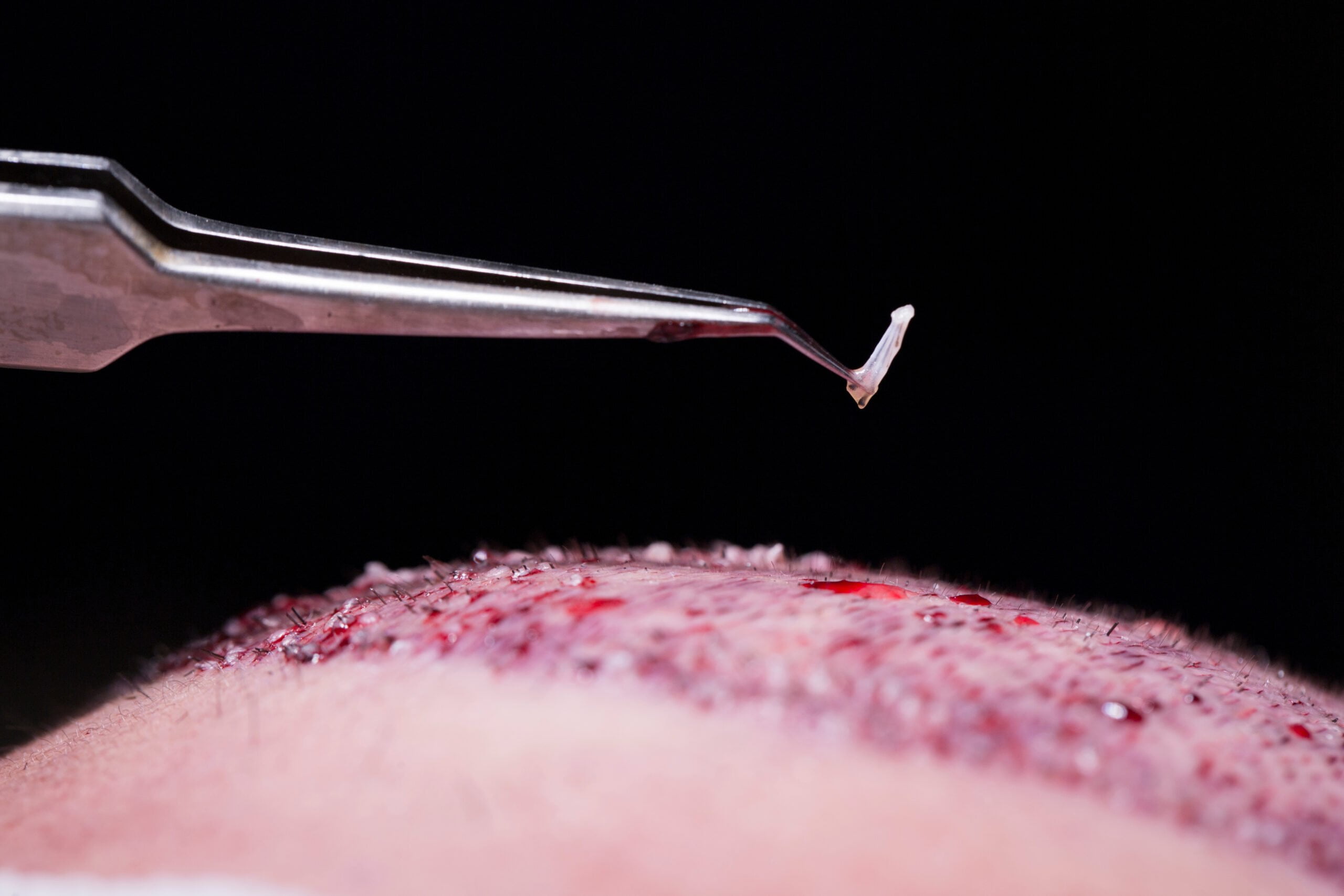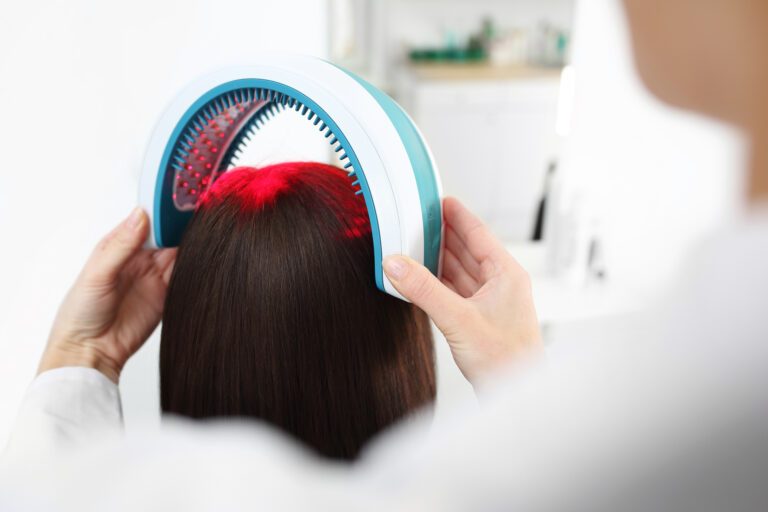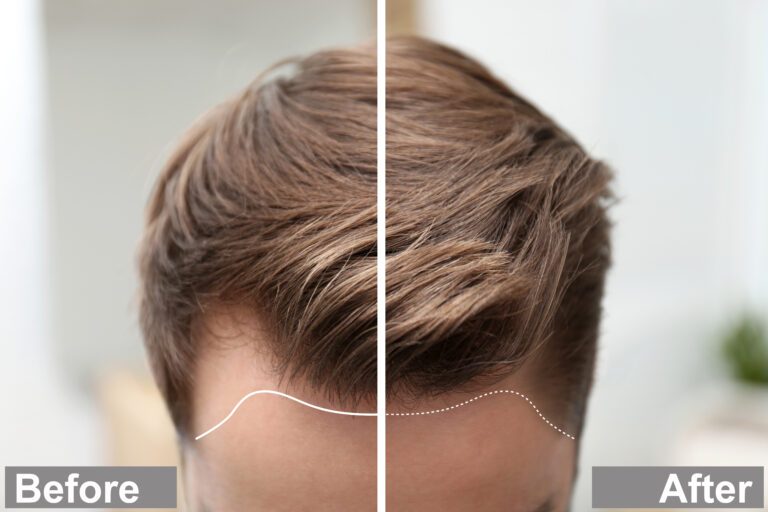How Many Grafts Will You Need For Your Hair Transplant?
So, you’re thinking about getting a hair transplant to cover the balding areas of your scalp. Now, you’re wondering: how many hair grafts do I need?
For reference, if you’re getting a hairline transplant, you can expect a requirement of 500 to 1000 grafts. For larger cases, such as crown balding, expect around 1500 to 3000 grafts.
That said, you can use the Norwood and Ludwig scale to get an estimate of the amount of hair you need for your hair transplant. We’ll discuss them in detail below.
What Are Hair Grafts?
Before we go over how many grafts you need for your hair restoration procedure, let’s define hair grafts first. It’s an important part of estimating the number of grafts for your scalp.
Hair grafts are strips of scalp skin tissue containing a unit of hairs and follicles. Your surgeon will plant these extracted pieces of hair “seeds” on the afflicted area to restart your hair cycle.
The condition of the donor grafts heavily affects the total number of hair that’ll grow. Healthier scalp donors typically have two to four hair follicles included in a single graft.
So, for instance, if your surgeon harvests 2000 grafts containing an average of two to three hair follicles, you’ll get around 4000 to 6000 hair transplants.
How Many Hair Grafts For Hair Transplant?
In estimating the number of grafts, dermatologists will look at the degree of baldness or thinning. Specifically, they’ll multiply the size of the bald by the desired graft density.
Typical hair transplants require around 500 to 3000 hair grafts. Though that can go lower or higher depending on your donor grafts’ density and the size of the recipient area.
The normal hair scalp contains approximately 100 grafts per square centimeter. In a hair transplant, you only need around 10 to 20 grafts per square centimeter for the best results.
That said, there are visual representations to estimate the number of grafts needed for your hair transplant. Experts use the Norwood and Ludwig scales for this purpose.
The Norwood Scale (Male)
The Norwood scale, also known as the Hamilton-Norwood scale, is a tool to measure the degree of hair thinning. It’s a documentation of the progression of male pattern baldness.
Because of its utility, clinicians use the Norwood scale as a point of reference for diagnosing hair loss. It contains seven stages measuring the phases and severity of alopecia in men.
Here are the stages according to the Ludwig scale and the number of hair grafts you’ll need:
Stage 1: No Hair Transplant Needed
Stage one usually means your hair is transitioning from an adolescent phase. There’s no balding or significant hair loss at this stage, so your surgeon isn’t likely to recommend a hair transplant.
Stage 2: Hair Transplants 500 Grafts
In this stage, there will be a slight decrease in the hair around your temple hairline. There’s no need for a hair transplant, but you can get around 500 to 800 grafts planted if you choose.
Stage 3: Hair Transplants 1000 Grafts
Clinicians consider this stage as the initial phase of male pattern alopecia. It affects either your hairline or crown, as such, surgeons will recommend transplanting 1000 (or more) hair grafts.
Stage 4: Hair Transplants 1500 Grafts
Norwood stage four means severe hairline recession—the hair on the crown also decreases further. You’ll need over 1500 grafts to cover the balding areas in the front and crown.
Stage 5: Hair Transplant 2000 Grafts
The hair loss in this phase is worse than in stage four. The space between the balding crown and the receding hairline will be thinner, so you’ll need 1800 to 2000 hair grafts.
Stage 6: Hair Transplant 2500 Grafts
This level of hair loss means the hair separating the bald crown and the receding hairline vanishes. It’s an advanced stage of male pattern baldness needing 1800 to 2500 grafts.
Stage 7: Hair Transplant 3000 Grafts
This part is the highest stage of baldness in men. A large portion of the front and crown hair is lost, leaving only a band of hair around the sides of the head.
Stage seven is the most challenging because of the wide bald area and the limited amount of hair to redistribute. The number of grafts you’ll need for this phase is around 3000 and more.
The Ludwig Scale (Female)
Like Norwood, the Ludwig scale is a measurement tool for hair loss progression. It was proposed in 1977 to help diagnose female androgenetic alopecia.
Unlike men, however, the number of women who suffer from hair loss is significantly lower. The reason for this is the lower testosterone levels of women as opposed to men.
Hair loss in women usually occurs on the crown after menopause and at a milder rate than male pattern baldness. Your doctor can fix it with the typical 800 to 1500 transplants.
Stage 1: Mild
Though it doesn’t need a hair transplant, at this stage, the hair on the crown will start to thin. As it’s mild, some women may find it difficult to notice the change in their hair density.
Stage 2: Moderate
During this period, hair loss is extensive around the vertex of the head. The hair loss is typically more pronounced at the point where the hair parts into two.
Stage 3: Severe
This phase is the most advanced stage of female alopecia. At this point, the hair on the crown is so sparse it can no longer hide the scalp.
Final Thoughts
Giving out an exact number of hair grafts will be difficult as it depends on several factors. The degree of baldness, gender, age, and medical conditions come into play.
That said, experts use the Norwood and Ludwig scales to gauge the stages of alopecia in men and women. How many grafts for hair transplant will depend on the level of hair loss.
You’ll need a few hundred to a thousand hair grafts for hairline transplants. On the other hand, in severe cases like crown balding, the grafts you’ll need can go up to a few thousand.







